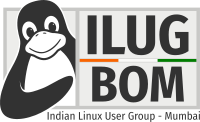June 2017 meetup
The June 2017 meeting of “Indian Linux User Group, Mumbai (ILUG-BOM)”, was held on 10th June 2017, 15:00 to 16:00 IST.
Venue:
IT Lab 5, First Floor, D - Wing,
Department of Information Technology,
Don Bosco Institute of Technology, Kurla (W).
10 min from Vidyavihar Station (W).
View Map
Agenda:
- 1 hour - “Live CD building using fedora tools” by Rajeev R K.
- Floor open for relevant discussions.
Meeting Minutes
Hi linuxers,
As per our usual schedule we had a small meetup on 10th June at Don Bosco Institute of Technology.
This week Rajeev gave a talk on “How to build a Fedora Workstation Live install media”. This was the same method that was used to create a custom image for St. Mary’s Schools linux install fest.
This time there were fewer attendees due to some members opting out due to work related and personal commitments.
We reached D.B.I.T around 2.45 pm, Tayyab Sir was already present and arranged a Lab for us. While Rajeev was busy setting up his laptop, which we nicknamed “Survival Kit”, rest of us were having some casual discussion about the install-fest and other happenings in Linux world.
Rajeev began the talk by explaining the setup required to build a custom image in fedora. He introduced us to a utility called Mock, which is like an evolution of chroot and is used to build live images of Fedora, Centos, Mageia, RHEL & Openstack images. There are various mock config files templates available targeting the above mentioned platforms that we can edit and customize to build our live images. One important thing to note is that the release of fedora image that you are trying to create should match the release that you are running.
Rajeev also explained to us the new strategy that fedora uses to provide a faster installation and deployment. Fedora live images are nothing but compressed system images, which are then copied to the target machine, instead of installing the application on the target machine the installation and setup is run while creating the live image itself and the actual install process, which is now handled by the utility called “liveinst”, is uncompressing this system image and copying it to the target file system.
Inside the mock chroot, the instruction for the install process and system image creation is provided by something called kickstart files, which in addition to bash commands has it’s own set of syntax. All the instructions such as, name of the user, file system size, repositories to add, name of the applications to include, any custom packages, and post and pre-install scripts that needs to be run is specified in this kickstart file.
Based on the instruction of the kickstart file, anaconda (fedora’s install utility) installs the packages for you.
The livemedia-creator utility is used to combine the all these actions and create a bootable live disk image. Rajeev also showed us how he created the custom plymouth boot animation for using the schools logo.
Although what we have reported here is just a quick overview of the session (and may be slightly out of order), Rajeev explained the process very nicely and in a in-depth manner.
The session had various casual discussions, which included topics like firewalld, iptables, apt vs dnf for caching updates locally, a bit of emacs vs vim, Flash, DRM and W3C’s inability to curtail them :) Overall it was a fun session. Also we thank for D.B.I.T for the space and providing tea and coffee for us.
We hope to see everyone in next meeting, which is scheduled on 8th July.
